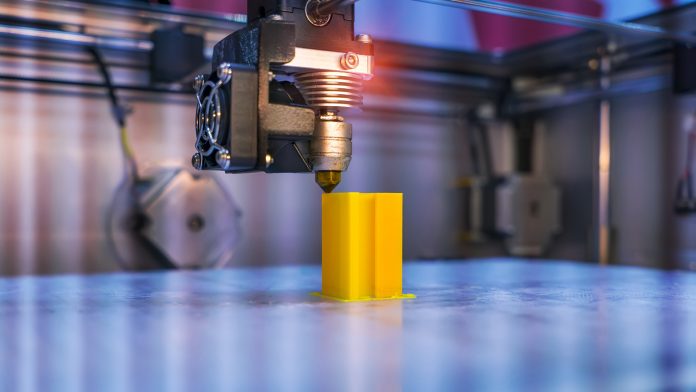Researchers from Washington State University have developed durable, high-performance 3D printing materials from Martian rock, a groundbreaking innovation that could one day be used to 3D print tools or rocket parts on the red planet.
The 3D printing materials comprise a small amount of simulated Martian rock known as Martian regolith – a powdery black substance that imitates the rocky, inorganic material located on Mars and a titanium alloy.
The team developed parts using as little as 5% and up to 100% Martian regolith. Although the 5% regolith parts were strong, the 100% parts were too brittle and cracked easily. However, the team explained that even high-Martian content materials would be useful for making coatings to protect equipment from rust or radiation damage.
Amit Bandyopadhyay, the corresponding author of the study and a professor in WSU’s School of Mechanical and Materials Engineering, commented: “In space, 3D printing is something that has to happen if we want to think of a crewed mission because we really cannot carry everything from here and if we forgot something, we could not come back to get it.”

The astronomical price of transporting materials in space
Bringing materials into space carries a substantial price, with estimates suggesting it costs around $54,000 for the NASA space shuttle to transport one kilogram of payload into Earth orbit. This means that anything that can be forged on another planet would save weight and significant amounts of money. Moreover, if something breaks, astronauts would require a means of repairing it on site, with 3D printing providing an exciting way to facilitate this.
In 2011, the team first exhibited the potential of 3D printing in space, manufacturing parts from lunar regolith from simulated crushed moon rock for NASA. Space agencies have since embraced the technology, with the International Space Station owning 3D printers to develop materials for experiments.
How well do Martian 3D printing materials perform?
For their research, the team employed a powder-based 3D printer to amalgamate the Martian 3D printing materials with titanium alloy, a metal that is commonly used in space exploration due to its excellent strength and heat resistance.
The researchers heated the 3D printing materials to over 2,000 degrees Celsius, which, once melted, flowed onto a moving platform that allowed the team to create different shapes and sizes. Once cooled, they tested their strength and durability.
The material made from 100% Martian rock cracked as it cooled, but the team explained that it still could be used to make radiation shield coating, as cracks do not matter in that context. However, the mixture with 5% regolith did not crack and showed better properties than the titanium alloy alone, meaning it could be utilised to make lighter-weight pieces that can bear heavy loads.
Bandyopadhyay concluded: “It gives you a better, higher strength and hardness material, so that can perform significantly better in some applications. This establishes that it is possible, and maybe we should think in this direction because it’s not just making plastic parts which are weak but metal-ceramic composite parts which are strong and can be used for any structural parts.”









